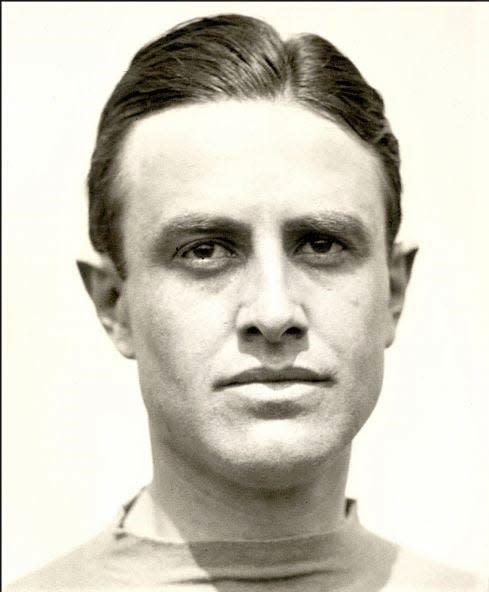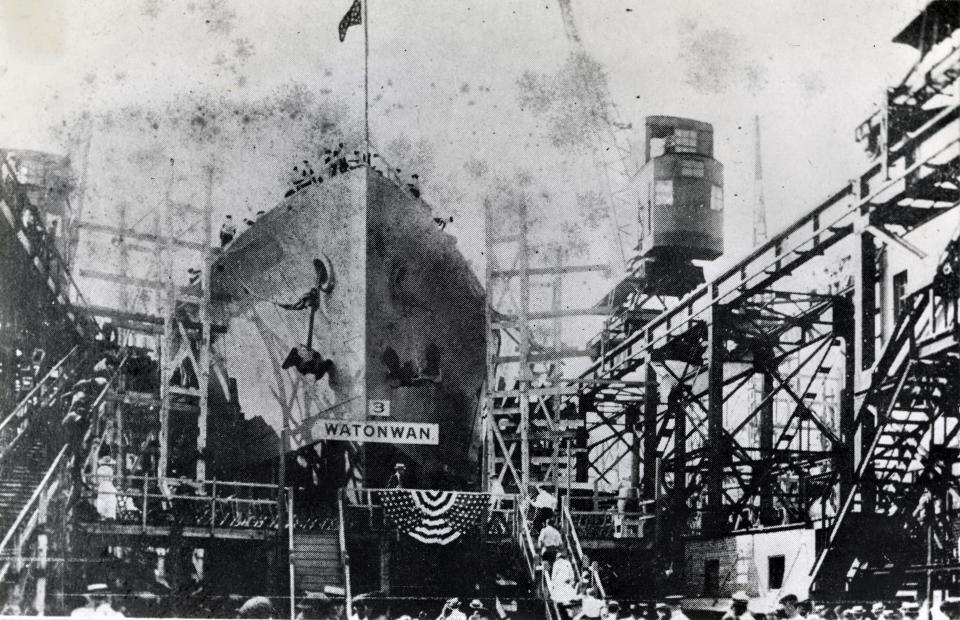What happened to Harriman? Town supported WWI effort along Delaware in Bucks
- Oops!Something went wrong.Please try again later.
Editor's note: This story has been updated to reflect the correct cost in today's dollars of building Harriman.
I learned much about politics from George Metzger. As Republican chairman of the county commissioners, affable George loved to talk inside baseball with me in his Doylestown office. I recall his quip about the spread of rumors: “I could whisper something to you and run as fast as I can to the other end of the courthouse to hear it going by,” he laughed. He also stressed, “the smart politician will see which way people are turning and get there first.”
I thought of this when considering the impact railroad heir W. Averell Harriman had on Bristol Borough before World War I. Averell’s daddy built a fortune controlling the Union Pacific, Southern Pacific, Illinois Central and two other railroads plus a Pacific steamship line and Wells Fargo. He left an estate worth $200 million to his son, who graduated from Yale in 1913. In college, he seemed more a party boy, tall and lean and focused chiefly on playing polo and campus social life.

It was three years after graduation that he snapped out of it. Like George Metzger, he suddenly realized where people were turning — toward joining World War I in Europe. Thousands of American troops would be deployed to France with no way to get there. They needed ships. Lots of them. Averell decided he’d build them.
He purchased the Roach shipyard on the Delaware River in Chester in early 1917, renaming it Merchant Shipbuilding Corp. Before war was declared in April, he won rich government contracts to build upwards of 60 transport ships and promised to deliver them within 18 months.
More from Carl LaVO:Remembering Winnahawchunick, Bucks County's vanished Native American town
Native American history in Bucks:Lenni Lenape were forced from Pennsylvania. Their ancestral remains now will rest in Falls
To achieve that goal, he needed another shipbuilding yard to augment that in Chester. He looked upriver to Bristol, Bucks County’s only seaport dating back to Colonial days. There, he acquired 260 acres on the upper edge of the borough and bounded on the north by Green Lane. Promptly a shipyard took shape featuring an immense factory and a dozen slip ways to launch freighters longer than a football field. The site would become a new township in Bucks: Harriman.

By terms of Averell’s contracts, the federal Emergency Fleet Corp. hired a Massachusetts company to design and build homes for the shipyard’s 3,000 workers and their families, bringing Harriman’s population to 15,000. The contractor built more than 200 group houses, 26 single homes, 25 duplexes, 212 apartments, boarding houses, bachelor quarters, a large Victory Hotel, a hospital and Harriman Public School.
No expense was sparred in creating the pop-up township where all streets were named after American presidents. Two-story homes were substantial and trendy. Each was built with individuality, the exteriors finished in either Tudor Revival or Colonial Revival styles with large front porches and steeply pitched gable roofs on streets lined with newly planted elm trees. At $12 million at the time (more than $202 million in today's dollars), the new town was the single most expensive project undertaken by the management agency in World War I.
Despite Averell’s promise to launch a ship a month from Harriman, it wasn’t to be. A labor dispute and dredging on the river to allow enough depth to launch 8,800-ton freighters slowed construction. The war ended in November 1918 before a single ship came down the ways. Fifteen keels had been laid, enabling the launch of Harriman’s first ship in February the following year. By then, Averell had persuaded the government it needed a substantial merchant fleet as an emerging world power. Over the next few years, the company launched 40 ships at Harriman and 41 at Chester. The last was the Yapalaga, launched from Harriman docks in 1920.
![Homes beside streets named for U.S. presidents are well preserved and date back to the founding of the Harriman Shipbuilding Yard. ]](https://s.yimg.com/ny/api/res/1.2/ldu4aq.QtkpiUYyKMUknXg--/YXBwaWQ9aGlnaGxhbmRlcjt3PTk2MA--/https://media.zenfs.com/en/bucks-county-courier-times/2ae01040aebb53ed0014f62607480451)
More than half of Averell’s ships were scrapped in the 1930s. German U-boats sank most of the remaining in World War II. A few survived, including the Yapalaga named for a Florida Indian chief. The ship served until 1970.
In 1923, Averell sold the shipyard, which became an aircraft manufacturing plant. Harriman Township incorporated into Bristol Borough in succeeding years. The Victory Hotel was torn down, the hospital eventually converted into a senor residential center and the public school became today’s Bristol Junior-Senior High School. All the homes were auctioned off.
Averell would go on to great success as a businessman, politician and diplomat. At one time, he owned the largest merchant fleet in the world, served as Secretary of Commerce under President Harry S. Truman and was 48th governor of New York.
“The war changed everybody’s attitude,” Averell reflected years later. “We became international almost overnight.” Today, his name continues to identify the well-preserved community in Bristol he founded at age 26 — the Harriman Historical District.
Sources include “Ships for the Seven Seas: Philadelphia Shipbuilding in the Age of Industrial Capitalism” by Thomas R. Heinrich published in 1997, and “Living Places: Harriman” found on the web at www.livingplaces.com/PA/Bucks_County/Bristol_Borough/Harriman.html. A note of appreciation to Stephanie Walker at the Margaret R. Grundy Memorial Library in Bristol for historical images of the shipyard to illustrate this column.
Carl LaVO can be reached at carllavo0@gmail.com.
This article originally appeared on Bucks County Courier Times: Bristol Borough's Harriman Historic District was WWI shipbuilding port

